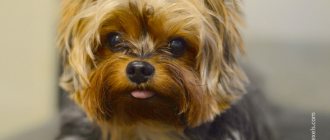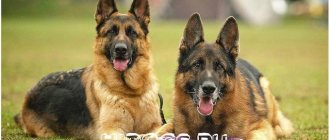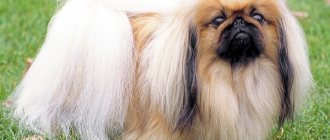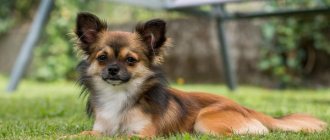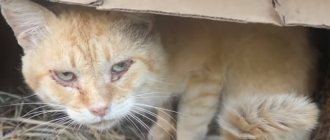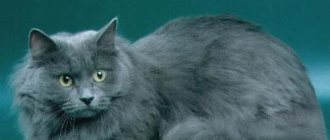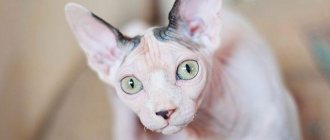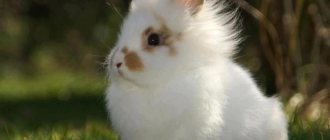The Russian spaniel is a hunting dog, a real pride of domestic dog breeders. This is the only domestic breed of gun dogs that is not recognized by the International Canine Federation, but is popular among hunters in our country and abroad. ROS (Russian Hunting Spaniel) is a special dog. It harmoniously combines: endurance, excellent working qualities, excellent physical characteristics, a gentle, kind disposition, playfulness and sociability.
Representatives of this breed help hunt feathered game and hares, serve in the police, and quickly and without errors find contraband and prohibited substances (drugs, explosives). Dogs are good for more than just work. Smart and loyal dogs make excellent companions with whom you can travel and spend active time.
We tried to collect in this material everything about Russian Spaniels (ROS), answer basic questions about the breed, and tell the main information that will be useful to the current and future owners of these dogs.
Story
The history of this young domestic breed of hunting dogs dates back to the end of the 19th century. Then the first representatives of the English Cocker Spaniel breed were brought into the country. In Russian conditions, these hunters did not receive the proper calling due to their short stature. In the conditions of Russian oak forests, stocky, short dogs experienced serious difficulties while hunting game birds.
At the beginning of the 20th century, lovers of hunting spaniels began to select for selection long-legged, tall dogs with a pronounced temperament. Such specimens were most suitable for bird hunting in domestic natural conditions. As a result of this work of breeders, by the 30s of the 20th century, a significant population of dogs had formed in the country, which were unlike any species of spaniel that existed at that time.
Purposeful work to develop and consolidate the new breed “Russian Spaniel” in the Soviet Union continued after the end of the Great Patriotic War. The goal of this difficult work was to breed a long-legged, friendly hunting dog. Specimens that were saved during the war were used for breeding, as well as different types of spaniels imported from abroad. The result of painstaking hard work was the first breed Standard, presented to the canine community in 1951. The Russian spaniel differed from the usual short cocker spaniel in size.
Work to improve the exterior and performance characteristics of the new breed was continued; for this purpose, representatives with the best field qualities were selected. The breed standard was supplemented in 1955 and 1966. Since 1972, only representatives of ROS were allowed to crossbreed; mating of these dogs with other spaniel breeds was prohibited.
History of the origin of the Russian spaniel
Previously, in Russia, for quite a long time, spaniels brought from Europe, usually from England, were used for hunting. Due to the characteristics of the land, game and hunters, the imported dogs did not conduct the hunt in the most successful way. Then the idea arose to create a breed that would hunt well in Russia, based on cocker spaniels from England.
Cocker Spaniels were crossed with Springers and Suseks, resulting in a completely different breed. From 1945 to 1949, the latest experiments were carried out to improve the resulting breed. This is how modern Russian spaniels appeared, which are excellent for hunting in Russian conditions .
After the breed was bred, its presentation took place. The first standard was approved back in 1951. In subsequent years, it changed a little, but since 1972, mating of the Russian spaniel with other dog breeds has completely stopped. It is worth noting that the Russian spaniel is recognized by the RKF , but it has not yet been recognized by the FCI.
Description of the breed Russian Hunting Spaniel
A harmoniously built hunting dog with strong bones below average height - this description of the Russian Spaniel breed resembles the description of the related breed “English Cocker Spaniel”. Representatives of both species are similar, but professional hunters will never confuse these two dogs.
For those who are just getting acquainted with ROS, we have highlighted the characteristic features of the Russian Spaniel breed, by which you can easily distinguish them from Cocker Spaniels.
Similarities and differences in the description of a cocker spaniel and a Russian spaniel
The breed standards of these two varieties of dogs contain a small number of fundamental differences by which they can be distinguished from each other. These two hunters have quite a lot of similarities. Therefore, let us dwell in detail on the distinctive features:
- Representatives of the ROS breed have a longer body and legs. Cockers are more compact and shorter.
- Cocker Spaniels' ears should be set low (at eye level). In ROS, the ears are set moderately low.
- The Russian Spaniel's head is lighter than that of the AKC.
- Cockers have longer hair.
- Russians are less “shaggy”.
- The “English” have a wider muzzle and a more developed occipital protuberance.
Important: the Russian hunting spaniel and the English cocker spaniel are two independent breeds, and not different branches of one.
Related article:
Small dog breeds - top 35 breeds with photos and brief descriptions. It may also be interesting to read a list of the smallest dog breeds with photographs and a brief description of their characteristics.
Raising and training spaniels
It is advisable for the puppy to be raised and raised by one owner. The pet will become attached to it and will quickly learn and follow commands. Thanks to their innate intelligence, puppies can be trained quickly. The owner does not require additional skills or extensive experience in training.
One of the main qualities that an animal must develop at the time of upbringing is an instant reaction to the call of the owner. Even if the dog is excited and chasing prey, he must immediately come to the owner at the first call.
The qualities of a hunter in dogs of this breed are developed in the field. To do this, they most often resort to the help of professionals. When working on the ground, Cocker Spaniels develop such important skills as complete obedience and endurance. Here the animals are taught extreme concentration.
After successfully completing all stages of field training, a representative of the breed can receive a field diploma.
Photo: pxhere.com
Breed standard Russian hunting spaniel
The official breed standard ROS is adopted only at the national level in Russia. Today, the edition approved by the decision of the Presidium of SOKO RKF (Union of Public Cynological Organizations - Russian Cynological Federation) dated January 29, 2020 is used. Until 2021, the edition of the Russian Spaniel Breed Standard dated April 19, 2012 was in effect.
ROS was introduced to the foreign community in the 90s of the last century. The International Cynological Federation still does not recognize the young Russian breed; in FCI documents it is classified as “outside the FCI classification”.
Outside the Russian Federation, the breed is recognized by only a few clubs and organizations:
- APRI = American Pet Registry, Inc.;
- CKC = Continental Kennel Club;
- DRA = Dog Registry of America, Inc.;
- FIC = Federation of International Cynologists;
- NAKC = North American Kennel Club;
- RSC = Russian Spaniel Club;
- UFC = Universal Kennel Club International.
According to the RKF breed standard:
- Body type. Strong, moderately squat. Dry type of construction.
- Rib cage. Long, moderate width and depth. The shape is oval. False ribs are developed.
- Back. Strong, straight. With well developed muscles.
- Limbs. Muscular. Direct. Parallel. The angle between the shoulders and shoulder blades is almost 100°. The angles of the hock joints are well defined. Elbows point straight back.
- Paws. The shape is round. Arched. The fingers are tightly clenched. The color of claws and pads is not established by the standard. There is thick fur between the toes.
- Gait. With free movements. Running - easy gallop.
- Neck. The length of the neck is commensurate with the length of the head. The position is average. The transition to the shoulders is smooth. The muscles are well developed.
- Head. Length – moderate. Dry.
- Muzzle. Wide. Tapers towards the nose. Equal to the length of the cranial part of the head.
- Nose. Wide. Nostrils are open. Nose - black and brown colors are allowed.
- Bite. Scissor-shaped. The teeth are strong, well developed, and fit tightly together. White color.
- Ears. Wide. Landing is above eye level. Long, hanging, mobile. Should fit snugly to the cheekbones. The bottom shape is round. Covered with silky wavy fur.
- Eyes. The shape is oval. Color ranges from light brown to dark brown.
- Tail. Mobile, well covered with hair. Harmoniously continues the top line. Thick at the base. Tapers towards the tip. According to the breed standard, docking of ½ length is allowed.
- Coat. The outer hair is of moderate length. Can be straight or wavy.
- Color of the Russian hunting spaniel. The new standard distinguishes two varieties: piebald and spotted colors and solid colors. The first type can be with or without specks (sparse or dense). In the second type, minor white markings are allowed on the dog’s throat, chest and paws. More information about colors in the subsection “Photos of colors”.
- Height at the withers of a Russian spaniel. In the new edition: height of males – 40-45 cm; females – 38-43 cm.
- How much does a Russian hunting spaniel weigh? The breed standard does not specify weight. The average weight of ROS is from 13 to 16 kg.
- How long does a Russian hunting spaniel live? Average life expectancy is 14 -15 years. They can live up to 20 years.
Approved by Resolution of the Central Board of the Russian Hunting and Fishing Union No. 84 dated December 11, 2021.
RUSSIAN HUNTING SPANIEL
BREED STANDARD
Brief historical background
The Russian Hunting Spaniel is a breed of Russian gun hunting dog, part of the extensive group of spaniel breeds, part of the extensive group of spaniel breeds, and owes its origins to a large extent to the English Cocker Spaniel and the English Springer Spaniel. The history of the Russian hunting spaniel in Russia begins at the end of the 19th century, when various breeds of spaniels, mainly English cocker spaniels, began to be imported to Russia. Despite the fact that some of them were hunted, these small, squat dogs turned out to be unsuitable for the conditions of most Russian bird hunts. At the beginning of the 20th century, spaniel lovers began to select higher-legged and temperamental dogs for breeding, and to import spaniels of a suitable type from abroad, using their breed potential to improve the existing different types of livestock. By the end of the thirties of the twentieth century, mainly in large cities of Russia (Leningrad, Moscow and Sverdlovsk), there already existed a significant number of spaniels that did not fit into any of the known breeds of this group and had a number of common characteristics. These were no longer cockers or springers, but also not Russian spaniels. The formation of the new “Russian” spaniel continued after the end of the Great Patriotic War, when spaniels of various breeds from abroad began to be brought to the Soviet Union. Purposeful breeding work made it possible to create the desired breed type based on the livestock preserved during the war years and imported specimens, which later received the name Russian spaniel. In 1951, the first standard of the Russian hunting spaniel was developed and put into effect, meeting the requirements and demands of hunters of the Soviet Union. A subsequent, slightly modified breed standard was adopted in 1966. The Russian hunting spaniel is used for hunting marsh-meadow, field, forest, steppe and waterfowl throughout Russia and neighboring countries. The task of the spaniel during the hunt is to find the bird, lift it on the wing and, after the hunter shoots, on his orders, serve the killed game. The Russian hunting spaniel has all the field qualities necessary for a gun hunting dog: endurance, good scent, energetic search, perseverance, and an innate tendency to retrieve. Season of application: spring, summer and autumn, and in the southern regions winter.
General appearance and type of constitution. The Russian Hunting Spaniel is a long-haired hunting dog below average height, moderately elongated, firmly and proportionally built. The strength of the skeleton and the overall harmony of the build ensure endurance and agility in work. The length of the forelimbs from the support to the elbow is equal to half the height of the dog at the withers, the head is long, proportional to the overall build. The approximate ratio “back - lower back - croup” corresponds to the proportion 2:1:1. High anteriority is characteristic, especially in males. Sexual dimorphism is pronounced. Males must have two normally developed testes, fully descended into the scrotum. Constitution type – strong dry. The typical gait for searching is a light gallop, which in difficult places gives way to a trot. Disadvantages: signs of rickets; general physical underdevelopment; lightness or roughness of build; weak manifestation of sexual dimorphism; lack of high forwardness in males; slight high rear in females. Vices: specified shortcomings, expressed in a sharp degree. Disqualifying defects: cryptorchidism.
Type of behavior. The type of behavior is balanced and mobile. The dog is hardworking, resilient, smart, sociable, and friendly. Disadvantages: excessive excitability; lethargy; phlegm. Defects: specified defects, expressed to a sharp degree; unprovoked aggression towards a person or animal; manifestation of timidity in an adult dog.
Growth and format. Height at withers for males is 40-45 cm, for females 38-43, elongation index for males is 110-115, for females 115-120. Disadvantages: deviations from the established height down to 1 cm (males 39 cm, females 37 cm) and up to 2 cm (males 47 cm, females 45 cm); not a significant deviation from the standard elongation index. Faults: height at withers less than 39cm for males and 37cm for females; height at withers above 47cm for males and 45cm for females; significant deviations from the standard elongation index.
Color. Solid colors: - black (red, brown) (without any white markings); - black with white markings (red with white markings, brown with white markings) with speckling (white markings can be on the head, neck, chest, belly and/or paws); - black and tan (brown and tan) (without any white markings); - black and tan (brown and tan) with speckled white markings (white markings may be on the head, neck, chest, belly and/or paws). Piebald colors with thick speckling: - black and white (red and white, brown and white) with speckling; - black, white and tan (brown, white and tan) with specks. Piebald colors with sparse speckling: - black and white (red and white, brown and white) with sparse speckling; - black, white and tan (brown, white and tan) with sparse speckling. All similar colors without specks are possible. Disadvantages: weak pigmentation, excessive distribution of tan (for example, merging of tan marks on the cheeks and eyebrows, etc.). Disqualifying faults: all colors not specified in the standard.
Coat. The outer hair is moderately long, soft, shiny, straight, close-lying. On the head and front sides of the limbs the hair is short and straight. On the upper side of the neck, back, sides and croup – moderately long and thick. On the underside of the neck, chest, belly, back of the front and hind legs, as well as on the ears and lower part of the tail, the hair is longer, soft, wavy, and forms feathers and dewlap. Between the toes the hair is thick and brushy. Disadvantages: harsh; loose fitting; wavy on neck and torso; underdeveloped or excessively long outer hair; underdeveloped hair. Vices: hard; excessively wavy; curly or in curls on the neck and body; disheveled; abundantly developed long integumentary hair on the head (“cap”); plump; short outer hair; lack of dressing hair.
Skin, muscles, bones. The skin is dense, elastic, without folds. The muscles are well developed, elastic, prominent. The bones are strong. Disadvantages: leather with minor folds; underdeveloped muscles; the skeleton is underdeveloped or rough. Flaws: skin in folds; underdeveloped muscles; the skeleton is weak, poorly developed (“poor bones”); rough bones.
Head. Dry, moderately long, with an oval, moderately wide skull, more graceful in females. The occipital protuberance is poorly defined. The profile lines of the skull and muzzle are parallel. The length of the muzzle and the length of the skull are equal to each other. The brow ridges are quite developed. The transition from the forehead to the muzzle (stop) is smooth, but clearly expressed. When viewed from above, the muzzle is wide, slightly narrower than the skull, with a slight narrowing towards the nose. Lips are dry, tightly fitting, well pigmented. When viewed from the side, the edge of the upper lip approaches a rectangle with a slightly rounded anterior corner. The nose is wide with open nostrils. The color of the nose is from brown to black, matching the color of the pigmented hair, preferably black. Disadvantages: heavy or light head; a head that is wide or narrow in the cranial part; slight cheekbones; some hunchback; slightly lowered or slightly upturned muzzle; slight non-parallelism of the profile lines of the skull and muzzle; poorly developed brow ridges; weakly defined transition from forehead to muzzle; slightly short or long muzzle (deviation up to 1 cm); damp lips; underdeveloped upper lips. Faults: heavy or light head; raw head; an excessively narrow or wide head in the skull; smoothed or sharp transition from forehead to muzzle; pronounced cheekbones; pronounced humpbacked nose; excessively downturned or upturned muzzle; pronounced non-parallelism of the profile lines of the skull and muzzle; muzzle is too short or long (deviation more than 1 cm); overly developed (“raw”) or thick lips; color of the nose and lips not provided for by the standard; completely or partially depigmented nose.
Ears. Hanging, long, wide, close to the cheekbones, rounded below, set calmly on the eye line or slightly higher, mobile, covered with long, slightly wavy, silky hair. The slightly elongated ear reaches the outer corner of the nose. Disadvantages: ears set too high; ears that are harsh at the base; not mobile enough; poorly dressed ears; ears are short (1 cm short of the outer corner of the nose). Faults: low or high set ears; rolled into a tube; narrow; motionless; lack of ear hair; light or heavy; short (not reaching the outer corner of the nasal cleft by more than 1 cm); excessively long (extending beyond the nose by more than 1 cm).
Eyes. Oval, moderately large, with a straight eyelid cut. The eyelids are dry, pigmented, tightly fitting. Eye color is dark brown or brown depending on the tone of the pigmented hair. Light brown eye color is acceptable in dogs of brown and brown-white colors. Flaws: round; slightly sunken; small; with loose eyelids; lightened eye color (more than allowed by the standard). Defects: drooping or depigmented eyelids; bulging, protruding eyes; very light or yellow eyes in all coat colors. Disqualifying faults: blue, green eyes, odd eyes.
Teeth and bite. Healthy, strong, white, well developed, close to each other. The dental formula is complete. Scissor bite. Faults, defects and disqualifying defects are subject to classification in accordance with the “Standards for Hunting Dog Breeds (Introduction)”.
Neck. Set relatively low (the angle to the body (horizontal) is approximately 40-45 degrees), oval in cross-section, muscular, without skin folds. The length of the neck is approximately equal to the length of the head. Disadvantages: short or long; neck set too high or too low; with poorly developed muscles; a small fold of skin on the underside of the neck (“dewlap”); slight folds of fat on the upper side of the neck. Faults: very short or excessively long; vertical or low neck; a large fold of skin on the underside of the neck (“dewlap”); significant load of fat folds.
Withers. Well developed. In males it is clearly expressed. Disadvantages: weakly defined withers in males, not pronounced in females. Faults: poorly developed low withers.
Back. Straight, strong, wide, slightly sloping from the withers to the loin, muscular. Disadvantages: soft back; When standing or walking, the dog slightly hunches its back. Faults: sagging; hunched back.
Small of the back. Wide, muscular, elastic, slightly convex. Disadvantages: direct; somewhat short loin. Vices: weak; humpback; excessively long or short lower back.
Croup Wide, slightly sloping, muscular. Disadvantages: narrow; short; slightly sloping croup; not muscular enough. Faults: narrow; short; sloping croup; with poorly developed muscles.
Breast. Moderately wide, deep (lowered just below the elbows or at their level), long, oval in shape, with well-developed false ribs. Disadvantages: poorly developed breasts; not reaching the elbows up to 1 cm. Defects: narrow or barrel-shaped chest; not reaching the elbows by more than 1 cm.
Stomach. Moderately fit. The transition from chest to groin is smooth. Disadvantages: excessively tucked stomach; the stomach is at the same level as the chest. Defects: sharp transition from the chest to the groin (“undermining”); the abdomen is lowered below chest level (“abdomen”).
Forelegs. Dry, strong, straight and parallel when viewed from the front, approximately equal in length from the base to the elbows from the elbows to the withers. The shoulder blades are long, set obliquely. The angle of the glenohumeral joint is about 100°. Elbows point straight back. Forearms are straight. The pasterns are strong, voluminous, slightly sloping. Disadvantages: small size or clubfoot; the angle of the glenohumeral joint is slightly more or less than 100°; slight turning of the elbows to the sides; slight curvature of the forearms. Defects: specified defects, expressed to a sharp degree; "Kozinets".
Hind limbs. Limbs with well-developed muscles. When viewed from behind, straight and parallel. When viewed from the side, it has well-defined articulation angles. The hips are set obliquely, with well-developed muscles. The thighs and shins are approximately the same length and form an angle of approximately 125°. The knee joints are well defined. The hock joints are dry and clearly defined. The hocks are voluminous and stand vertically under the hocks. Dewclaws should be removed. Disadvantages: somewhat narrow or wide stance; hock joints slightly closer together or turned to the sides; articulation angles are slightly less or more than 125° (slight “sabre” or “straight back”). Defects: specified defects, expressed to a sharp degree; presence of dewclaws.
Paws. Round, arched, with tightly clenched toes (paw in a “ball”) and thick hair between them, with strong pads. The claws touch the support. Disadvantages: narrow; somewhat elongated (oval); a little loose; with excessively long soft hair between the fingers. Faults: elongated (“hare paws”); flat; loose.
Tail. The tail is docked at half its length. Set in continuation of the topline, rather thick at the base with gradual thinning towards the tip. In a calm state, the dog carries the tail in continuation of the top line, harmoniously completing the overall build. When excited, males may carry their tail slightly higher. The tail is well covered with guard hair and is mobile. For dogs born in countries where tail docking is prohibited, an undocked tail, saber-shaped or straight, reaching the length of the hock joint, is allowed. Disadvantages: low set; sedentary; when calm, the dog holds its tail slightly above the top line; short or long docked; The undocked tail is thin or below the hocks. Faults: when calm, the dog carries its tail above the top line at an angle of more than 45 degrees; tail break; undocked tail in dogs born in countries where tail docking is not prohibited. Disqualifying defects: congenital taillessness.
Movements. Movements are light, free, balanced at all gaits. Disadvantages: sluggish; mincing; restricted movements; prolonged with lameness (even of one limb); frequent ambling. Defects: specified defects, expressed to a sharp degree; constant ambling instead of trotting; poking movements in steps.
Note. The most common deficiencies and defects are indicated. In addition to the above, disadvantages include any deviations from the norm that are not pronounced. Deviations from the norm, expressed to a sharp degree, are vices.
Characteristics of the Russian Hunting Spaniel breed
These dogs were originally bred for hunting, so the main traits inherent in ROS are: endurance, excellent sense of smell, tirelessness, and perseverance. The character inherent in nature of the Russian hunting spaniel is best revealed during the hunt. There they patiently track down game, decisively rush into the water and jump into the swamp slush for prey, and boldly make their way through thickets of nettles and burdocks. Nothing can stop the hunting dogs.
A magical transformation happens to Russian spaniels when they return from hunting. At home, these tireless active and fearless hunters become ordinary sofa dogs. They behave good-naturedly and gently with their household members, and welcome guests. Ready to be close to the owner, no matter what he does. This may be surprising, but this is how most owners of dogs of this breed speak about their pets.
Dogs are non-conflict, non-aggressive, absolutely good-natured and generous towards children. They tolerate small children's pranks and become loyal friends for little family members. Get along with other dogs and cats. Caution should be exercised only by families with small pets: hamsters, rats, guinea pigs. The hunter's instinct can take over the dog, this can lead to dire consequences.
Adult dogs retain puppy playfulness and do not lose interest in various types of entertainment. The most favorite pastimes of this active dog are searching for any objects and fetching balls. Dogs need to be played with daily to avoid unwanted destructive behavior. Animals can compensate for the lack of play with chewed shoes.
Briefly about the main thing
- The Russian Cocker Spaniel is a relatively young and one of the best dog breeds bred in Russia.
- Representatives of the breed are small in size with thick, long hair. The maximum weight of a healthy dog ranges from 18 kg.
- The animal has a number of necessary hunting characteristics. It is an excellent assistant when hunting quails, hares, etc.
- A spaniel can be kept at home in a private house or apartment. All that is needed is the attention of the owners and daily active walks with the animal.
- Caring for an animal is not difficult.
- Representatives of the breed have strong immunity and rarely get sick.
- Spaniels are easy to train, have a cheerful temperament, can become an excellent hunting assistant and a favorite pet for the whole family.
- The Russian Cocker gets along with children. They enjoy playing with the dog.
- If properly maintained, dogs can live up to 15 years.
Care and maintenance of the Russian Spaniel breed
The ideal place to keep ROS is a country house in the countryside with a spacious yard and a forest nearby. This is a real paradise for a hunting dog, who could realize his scouting instincts there, enjoy a variety of aromas, and unity with nature.
But in this dog paradise there is no place for a rotten kennel, an iron chain and a cramped enclosure. Spaniels can rest in the yard in warm, dry weather; in the summer they will not refuse to spend the night under a canopy. But they are not suitable for year-round outdoor use. A spaniel's place is in the house, next to its beloved owner.
A Russian Spaniel hunting dog can also be kept in city apartments. The main condition for such urban housing is sufficient walking, regular taking of the animal to nature and hunting. If you have a dog that is not trained to hunt, he also needs to be taken out of town for walks. You can take your pets with you on hiking trips through the forest. The compact dog fits perfectly into a regular backpack.
Important : if you compare how long Russian hunting spaniels live and companion dogs that do not take part in hunting, we can conclude that hunting has a positive effect on life expectancy.
Related article:
Nickname for a spaniel boy or girl - examples of names, tips, hunting nicknames . Not only does the puppy need to be selected according to many parameters, but it also needs to be named correctly. Read in a separate article about naming options for a spaniel puppy.
Description of the character of the Russian spaniel
As mentioned above, Russian spaniels are intended not only for hunting, but also in everyday life they will become wonderful companions and friends. They are very attached to their owner and love to spend time with him. Even if you decide to go fishing, you can still take your dog with you. She will not disturb you, but will simply sit quietly next to you, diluting the loneliness.
Russian spaniels love to swim , so you shouldn’t deprive them of this pleasure. If you have your own house with a plot, then do not keep the dog indoors, let it out into the yard and let it frolic there. However, first close the gate and the gate.
The Russian Spaniel is very attached to children and loves them very much. He will be happy to spend his free time with them. They will play, run, jump and follow their commands. Don't be afraid to leave your dog with your child, because Russian spaniels are very friendly and will never hurt their friend.
As for their attitude towards other animals, spaniels are also not known for their aggression. In the house they will get along with the cat without any problems and will get along with him. However, they don’t have such love and respect for other people’s cats, and they will quickly drive them away from their territory. In terms of pets, it is important to remember that you cannot have exotic species in the house , such as hamsters, guinea pigs, etc. It is not at all impossible that one day their hunting instinct will take over the spaniel, and they will perceive a small animal nearby as their prey.
To summarize, it can be noted that Russian spaniels are persistent, strong and active dogs with excellent sense of smell. By nature, they are calm, good-natured and loyal, easy to train, affectionate with children and obey their owners.
How to care for a Russian Spaniel
The dog's luxurious coat requires regular and thorough care. She is combed 1-2 times a week. First, use a natural wide-tooth comb to comb out debris, then use a brush or fine-toothed comb to add shine to the coat. Brushing the fur not only removes dirt, dandruff, and dust, but also stimulates blood flow to the skin surfaces. Puppies need to be taught this mandatory procedure from a very early age, so that later they do not avoid it and calmly allow themselves to be brushed.
But bathing dogs completely with detergents and hygiene products is allowed 2-3 times a year. There is no need to carry out this procedure more often for preventive purposes. Extraordinary bathing is allowed only if necessary, if the animal has smeared itself in something. But even in such cases, it is better to wash the dog partially, without completely immersing it in water. Too frequent bathing washes away the protective oil layer from the coat.
Dogs of this breed get two types of haircuts:
- Hygienic. Held once every two weeks. The hair is trimmed around the fingers, in the vicinity of the pads, around the anus, near the auditory openings. The mats in the groin area are trimmed.
- Full. Professional haircut. It is carried out at intervals of 2-3 months in grooming salons.
The claws of spaniels that constantly walk on hard ground can wear down on their own. The owner must control the length of the claws, preventing excessive growth. Too long claws can dig into the animal's finger pad - this causes pain and discomfort to the pet.
It can also cause your dog to become lame. The claws are trimmed with a special nail clipper. The guillotine design is best suited for this. Trimming with simple scissors is unacceptable - this can lead to separation of the claws. It is allowed to use a file for this manipulation.
Your pet's large floppy ears require special attention. This signature POC needs daily inspection. During the inspection, contamination and traces of possible infections are revealed. The auricle is cleaned from the inside of dirt and wax with a damp swab or cotton pad soaked in warm boiling water. Do this as needed or 1-2 times a month.
Some publications recommend airing floppy ears. The advice is controversial, but not without meaning. This design of the ears, due to poor ventilation, creates an ideal environment for the growth and development of various microorganisms and mites. To ventilate your pet’s ears, you can wave them a little, like the wings of a butterfly, or secure the ears with a soft elastic band or a special clip above the dog’s head.
Caring for a Russian Spaniel puppy and an adult animal includes eye examination and cleaning. A healthy animal's eyes should be clean, without signs of souring or tear tracks. If something similar is detected in a dog, it should be shown to a veterinarian. For prevention, it is enough to wash your eyes with a cotton pad soaked in a decoction of chamomile or a weak tea solution.
Strong and healthy teeth are the pride of a hunting dog and a guarantee of his health. From puppyhood, dogs are taught to brush their teeth - this prevents the formation of tartar and gets rid of plaque on the teeth. Cleaning is carried out with a special toothbrush using toothpaste from a pet store. It is necessary to give preference to products without a strong smell and taste. At the end of cleaning, wipe the teeth with a soft cloth or dry cotton swab.
Important: it is necessary to ensure that the dog does not swallow the toothpaste - this can cause gastrointestinal upset.
Maintenance and care
Living with a Russian spaniel in an apartment is a good option. He will definitely not cause anyone any trouble, as he is inclined to obedience. But, if you got such a pet while living in a country house, get ready to be faced with the problem of a dug-up garden.
All hunting dogs tend to dig holes. At this moment, their natural instincts awaken, so scolding them for undermining is useless. The animal tolerates cold well, but heat - not so much. To help him tolerate high temperatures, add cold water to his bowl throughout the day.
You can also place your dog in a kennel. It is desirable that it be spacious and not cramped. But there is no point in keeping him there 24/7. This dog is very active and energetic, so life within the 4 walls of an enclosure will definitely seem boring to him. In addition, he is almost completely devoid of aggression, therefore, there is no need for his isolation.
Remember, you will have to walk such a dog often and for a long time. Without this, she will become very bored and whine. Don't let your pet lose interest in life. If possible, go out into nature with him, go to the stadium, swim in the river, etc. If you decide to get a Russian spaniel and at the same time lead a sedentary lifestyle, you should know that you are dooming him to suffering.
Regarding walks. When walking your dog in a crowded place, hold the leash as tightly as possible. She can suddenly rush forward when she smells a large bird or rodent. The hunter's instincts never fall asleep in it. Therefore, it is extremely important to teach this animal to obey you from childhood.
Now let's talk about care. There will be no specific grooming measures for a representative of this breed. He is clean, washes himself regularly, like a cat, and also loves to swim in the water. He also loves to take baths. But, you should use cleansing shampoo to care for such a dog no more than 1-2 times a year.
Additional care tips:
- Rinse the animal's eyes to remove acidification from them.
- Brush his teeth to remove food plaque.
- Sharpen your claws.
- Clean your ears from wax.
- Remove thorny plants from his fur (important in the summer).
Also, do not forget to take anti-parasitic measures. For example, you should buy a flea collar for your Russian Spaniel. Anti-worm medications are given 1 or 2 times a year, not only for therapeutic purposes, but also for preventive purposes.
Health of the Russian Spaniel dog breed
The breed itself is considered quite healthy. With proper maintenance, proper care, adherence to the schedule of vaccinations and antiparasitic treatment, and a nutritious balanced diet, health problems rarely arise.
Genetic pathologies:
- cryptorchidism;
- hip dysplasia.
Other diseases to which the breed is prone:
- obesity;
- otitis;
- food allergy.
Training dogs of the Russian hunting spaniel breed
We have already written that this breed is smart and easy to train. Puppy training begins from the first day of life in a new home. The owner must immediately show the new pet who is boss in the house. The training program is built depending on whether the dog will be used for hunting or will be a companion animal.
Training for hunting
Spaniels are hunting dogs with well-developed hunting instincts. During the hunt, they must go ahead of the hunter, find and flush out the game. They work without a stand, so the dog owner is in for a surprise effect. The second job function is to bring and serve the hunted prey to the hunter. Properly trained dogs do this without prodding from humans, they are excellent swimmers, and are not afraid to jump into ponds and swamps after birds.
Pets begin to be trained for hunting from an early age. The main command that working dogs are taught is: “Give it!” Active puppies are happy to bring and give to the owner a ball, a stick, or a bird's wing. The commands required for a hunting dog are: “Come to me!”, “You can’t!”, “Place!”, “Take it!” It is best to conduct training with a canine specialist. Energetic pets quickly remember commands, carry them out with enthusiasm, easily and naturally.
Raising pets
The main thing that needs to be taught to a companion dog is obedience. Hunting dog breeds, such as spaniels, may run away during a walk due to a sudden surge of hunting instinct. It is not uncommon for pets to get lost because of this. Another important and necessary command that should be one of the first to learn is “Fu!” or “You can’t!” This breed is a glutton that strives to pick up something on the street and eat it.
What are Russian spaniels for?
The Russian Spaniel is both a wonderful hunting dog and an excellent family pet . Since they are small in size, they feel comfortable even in a small apartment.
The Russian Spaniel is an excellent hunter thanks to its endurance, excellent sense of smell, tenacity, energy and hunting sense. They do not need long training; they are able to hunt from an early age. Her tasks during the hunt are as follows: find a bird, lift it on the wing, and bring it to the hunter.
Typically, Russian spaniels are used for hunting jerk, quail, hare, sandpiper and wild goat.
also know that the Russian Spaniel is not suitable for hunting in dense thickets, difficult and poor prey areas. They will quickly become exhausted and will not be able to adequately help. But in places rich in loot, they are energetic and inspired and will really be able to help you.
In addition to hunting, they are wonderful companions , distinguished by their love for children, and are always ready to do everything to protect them from danger.
What to feed
The owner chooses the type of food (natural, industrial) for his pet. Both varieties are suitable; each owner decides what is more acceptable and convenient for him. The main thing is to monitor the volume of daily portions and avoid overeating.
Industrial feed
The daily ration is calculated using the formula: 40 g. feed for 1 kg. live weight.
Recommended brands of food:
- Acana Adult Dog Heritag;
- Orijen Adult Dog;
- Bosch Light;
- Brit Care;
- Royal Canin Adult Cocker.
Natural nutrition
Daily norm: from 30 to 60 g. per kilogram of animal weight.
A dog's diet should include:
- lean meat;
- beef tripe;
- lean sea fish fillet;
- quail egg;
- vegetables, greens;
- dairy products;
- bran;
- Brewer's yeast;
- porridge (oatmeal, buckwheat, rice).
Important: game caught during hunting is not included in the diet, so that the dog does not want to spoil the prey.
Pros and cons of the Russian Spaniel breed
The characteristics of any breed have pros and cons; the Russian spaniel also has disadvantages and advantages.
Pros of ROS:
- Excellent hunting characteristics.
- Friendly disposition, lack of aggression.
- Devotion.
- Fearlessness.
- Suitable for keeping in a city apartment.
- The fur does not have the characteristic dog smell.
- Perky disposition, playfulness.
- Ability to get along with children and pets.
Cons of ROS:
- They shed heavily.
- They may overeat.
- Requires long active walking.
- Tendency to food allergies.
How to choose a Russian Spaniel puppy
If you choose between a bitch and a dog , then you should know that the latter are more powerful and hardy, and the former are more obedient and easier to train.
It is better to take a puppy , although you can take an adult dog. When talking about pedigree, you need to understand that this is not just a piece of paper, but a guarantee of a strong and healthy dog, whose ancestors have shown themselves to be excellent.
The optimal average weight of a puppy one month old is 1.6-2 kilograms.
When choosing a color , many prefer dark and avoid light, believing that white dogs are much more dirty. In fact, this does not matter, since dogs of any color get dirty equally, but a white dog will be more visible at dusk.
When choosing a puppy, you should pay attention to whether he will try to break free and explore a new space. If so, then he will grow up to be an excellent hunting dog, but if a Russian spaniel is needed not for hunting, but simply as a pet, then it is better to choose a calmer puppy.
Also, when choosing, you should pay attention to the puppy’s movements and its proportionality. If he lifts his tail slightly, this is normal; this habit goes away with age. However, the tail should not be carried vertically upward at all times.
There is no need to take a short-legged puppy; his head should be proportional to his body, his ears should reach his nose. The lobe should be black. If there is a hump on the nose, then great, as it is an indicator of a long muzzle. The puppy's bite should be a scissor bite.
Photos of colors of the Russian Hunting Spaniel breed
The breed standard specifies two types: solid, piebald and spotted. Minor white markings on the dog’s paws, chest and throat are allowed in solid colors (red spaniel, brown spaniel, black spaniel), and in the second type of color there may be specks of varying intensity.
- Black Russian Spaniel
- Brown and tan
- Black and tan
- Black and white Russian spaniel
- Red and white
- Brown-white
- Black and white with tan
- Brown-white and tan
Where to buy a puppy
When choosing a puppy, give preference to club pets so as not to purchase a mixed breed or a defective animal. Carefully study all documents: pedigree, field diplomas of parents, results of genetic tests.
Kennels of the Russian hunting spaniel:
- Shchelkovo ROSy, Moscow – russianspaniel.ru;
- Russian spaniels of St. Petersburg, St. Petersburg – russianspaniel-spb.com;
- Spaniels of the Volga region, Kazan – spaniel-volga.ru.
Owner reviews
Below we have given a couple of reviews from owners of the Russian Spaniel dog breed, which we received in personal messages. If you found these reviews useful, write your review in the special feedback field below and share your experience. After all, a live review from a spaniel owner is very valuable for people considering purchasing a puppy of this breed, who would like to learn more about the wonderful Russian Spaniel dog breed.
Nikolay: “When I was going to get a dog, I had a choice of two breeds: Russian black spaniel and cocker. I doubted that I needed a dog for hunting and fishing. Having studied almost everything about Russian spaniels on the Internet, I gave preference to the ROS puppy. And I was not mistaken. This is an unusual dog. She is at the same time calm at home, active and inquisitive in the forest. It is important to let her express this activity to the fullest. The spaniel is cramped in the courtyard of a multi-storey building; he needs a lot of free space.”
Svetlana: “My brother the hunter has a black spaniel. This is a tireless dog, an energizer battery. Curious, inquisitive, a real explorer! One can envy her energy. The children adore her, she answers them in kind. It’s always fun and interesting with her.”
